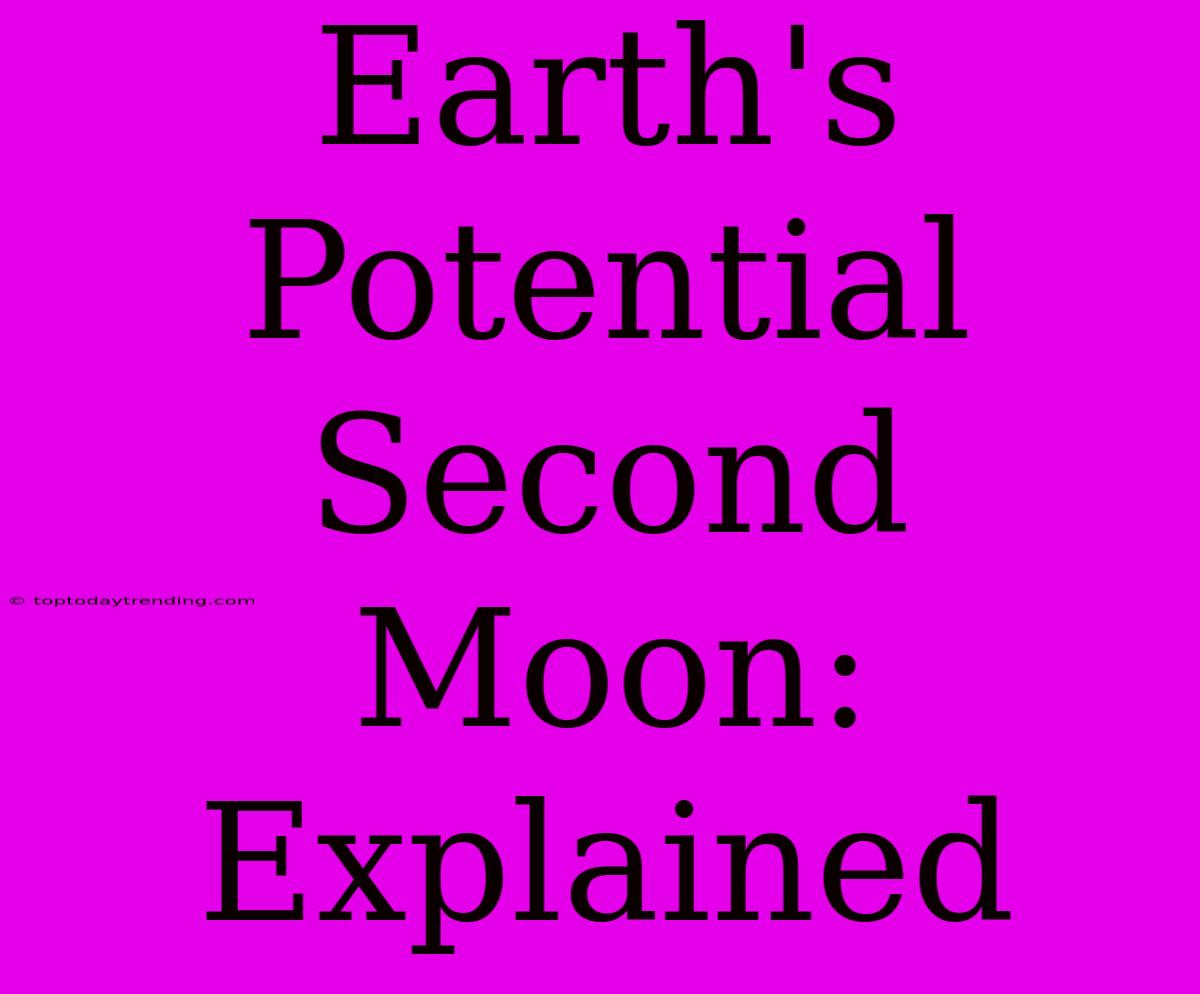Earth's Potential Second Moon: Explained
The idea of Earth having a second moon might seem like science fiction, but recent research suggests it might be closer to reality than we think. While our familiar moon has been our celestial companion for billions of years, a new study points to the possibility of a temporary, second moon orbiting our planet.
The Transient Moon: A Temporary Companion
This potential second moon is not a large, permanent celestial body like our moon. Instead, it's a near-Earth asteroid, temporarily captured by Earth's gravitational pull. These asteroids, also known as mini-moons, are small, rocky bodies that occasionally come close to Earth.
How does a mini-moon get captured?
Imagine a small asteroid passing near Earth. If the asteroid's trajectory and speed are just right, Earth's gravity can "capture" it, pulling it into a temporary orbit. This orbit isn't stable, as the mini-moon can be easily pulled away by the Sun's gravity.
2020 CD3: A Potential Example
In 2020, astronomers discovered a mini-moon named 2020 CD3. This asteroid, measuring about 1.9 to 3.5 meters across, was observed orbiting Earth for about three months before escaping back into space. This discovery solidified the idea that Earth could have temporary "second moons" and prompted further research into this phenomenon.
The Significance of Mini-Moons
While these mini-moons are small and temporary, they hold scientific value:
- Understanding Asteroid Dynamics: Observing mini-moons helps us understand the dynamics of asteroids and how they interact with Earth's gravity.
- Potential Resource Exploration: In the future, these mini-moons could be valuable resources for space exploration.
- Expanding Knowledge of Near-Earth Objects: Discovering and studying mini-moons increases our knowledge of near-Earth objects, which are important for planetary defense.
The Future of Mini-Moon Research
Scientists are constantly scanning the skies, searching for more mini-moons. As our ability to detect and track these objects improves, we can expect to find more temporary moons orbiting Earth. This ongoing research helps us understand the dynamic and ever-changing nature of our solar system.
Conclusion
While the idea of a second moon might sound fantastical, the possibility of temporary mini-moons orbiting Earth is grounded in scientific evidence. These small, temporary companions are not just a curiosity but also valuable tools for understanding our solar system and potentially even exploiting future resources. As our understanding of these transient celestial bodies grows, we can expect more exciting discoveries about Earth's potential "second moons" in the future.

